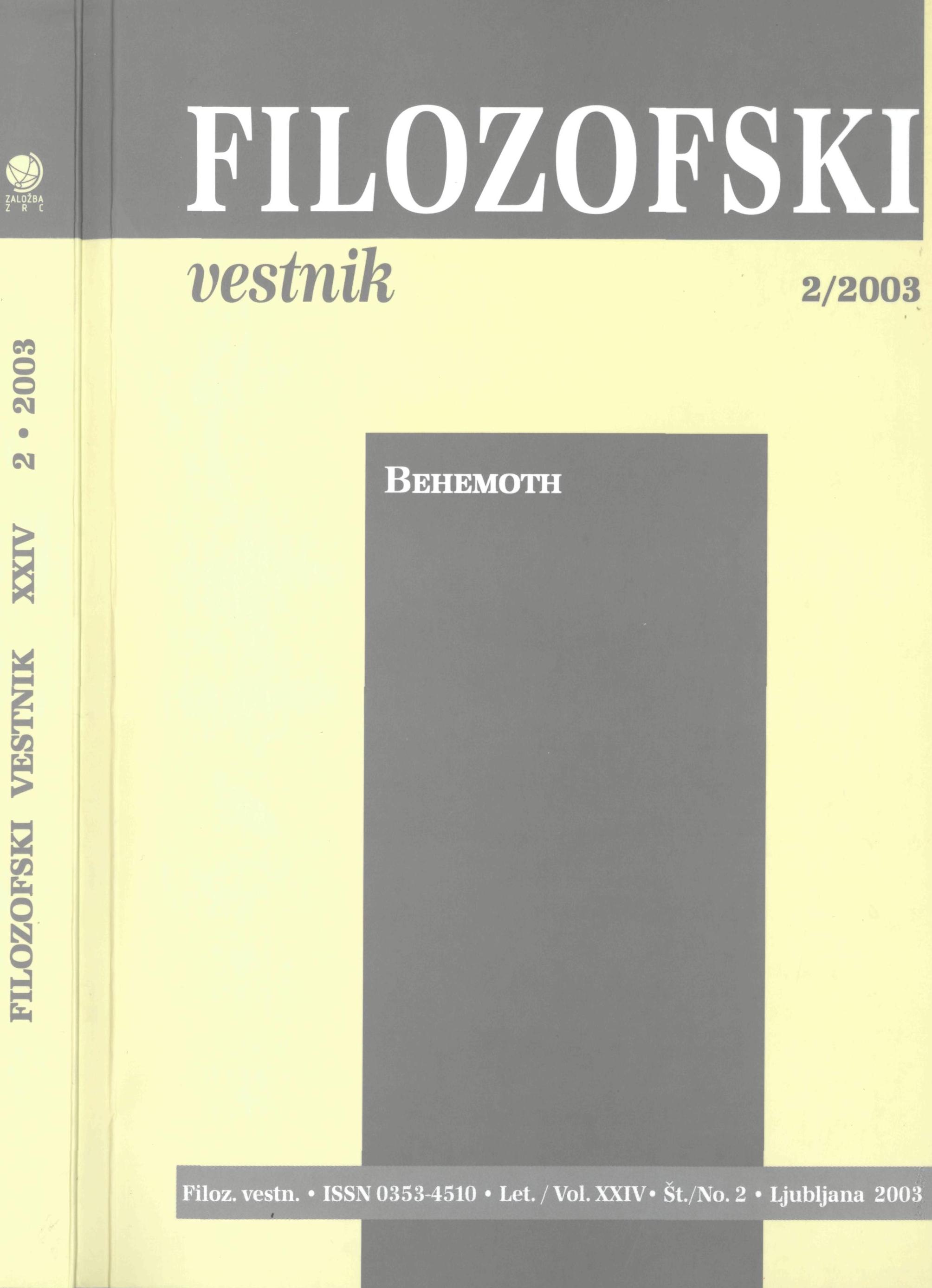Behemothovo občinstvo in politika konverzacije
Ključne besede:
Thomas Hobbes, Behemoth, zgodovinopisje, občinstvo, državljanska vzgojaPovzetek
Ce želimo razumeti, da se Thomas Hobbes v Behemothu naslavlja na dvoje občinstev, moramo to delo brati kot dialog. Neposredni naslovljenec v dialogu je mlajši sogovornik. Ta je občinstvo pripovedi, zgodovine angleške državljanske vojne, ki mu je predstavljena. Imamo pa tudi občinstvo dialoga kot takega, občinstvo metanaracije. Brž ko razumemo to dvojno strukturo, se nam Behemoth pokaže kot Hobbesov zgled za poučevanje ljudi o njihovih dolžnostih s pomočjo zgodovine. Behemoth torej ni zgodovina vojne, niti ni poskus razumeti tisto vojno skozi prizmo Hobbesove teorije, pač pa je poučevanje bralca ali bralke o tem, kako lahko sogovornika oblikujeta v dobrega podložnika.Prenosi
Podatki o prenosih še niso na voljo.
Prenosi
Objavljeno
2016-01-03
Kako citirati
Vaughan, G. M. (2016). Behemothovo občinstvo in politika konverzacije. Filozofski Vestnik, 24(2). Pridobljeno od https://ojs.zrc-sazu.si/filozofski-vestnik/article/view/3397
Številka
Rubrike
Articles
Licenca
Avtorji jamčijo, da je delo njihova avtorska stvaritev, da v njem niso kršene avtorske pravice tretjih oseb ali kake druge pravice. V primeru zahtevkov tretjih oseb se avtorji zavezujejo, da bodo varovali interese založnika ter da bodo povrnili morebitno škodo.
Podrobneje v rubriki: Prispevki





